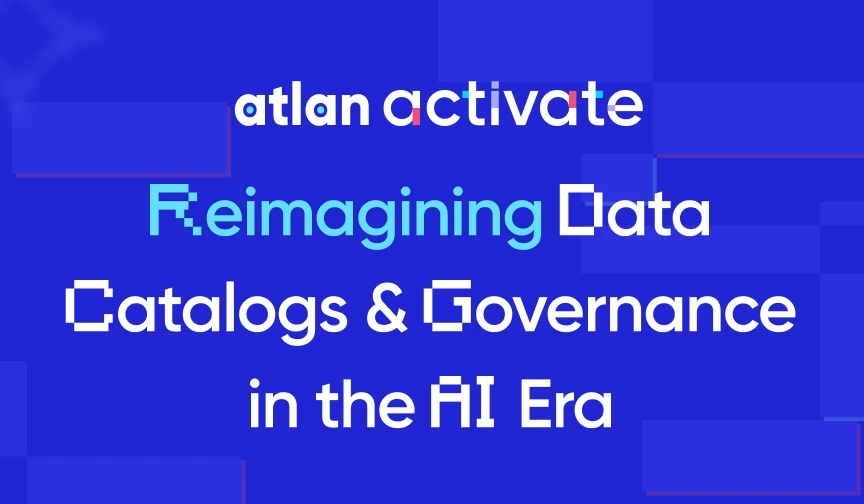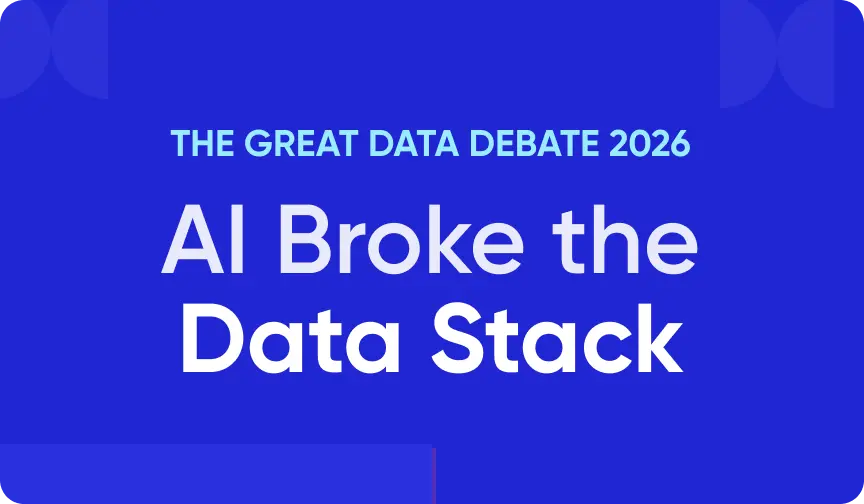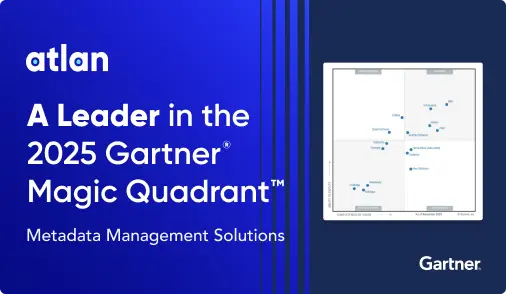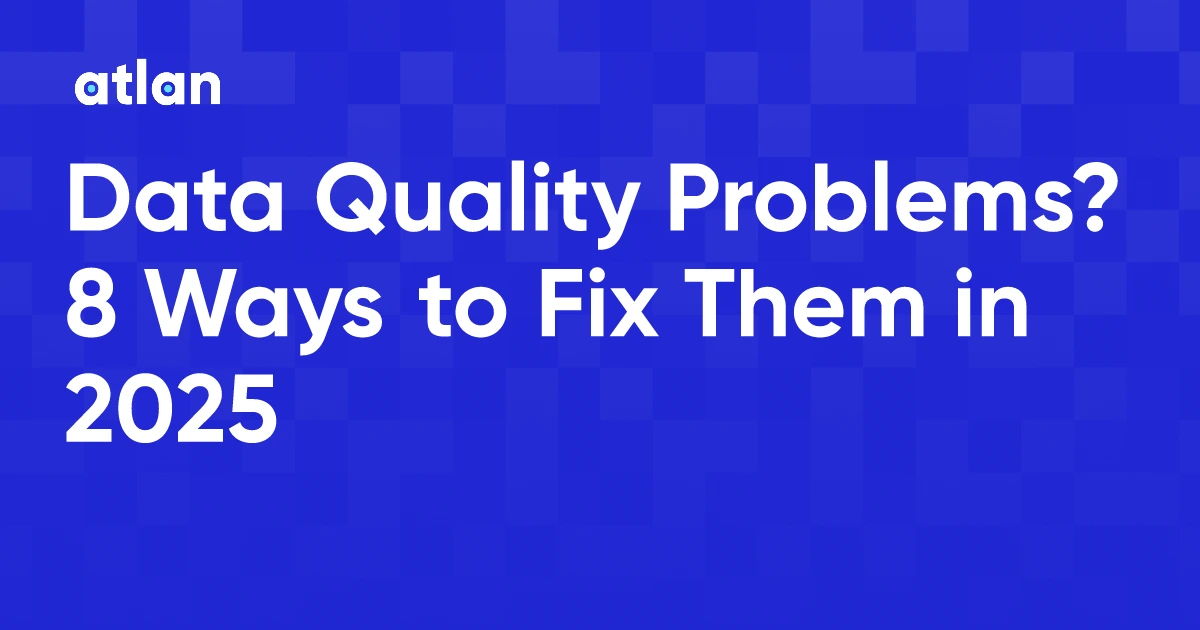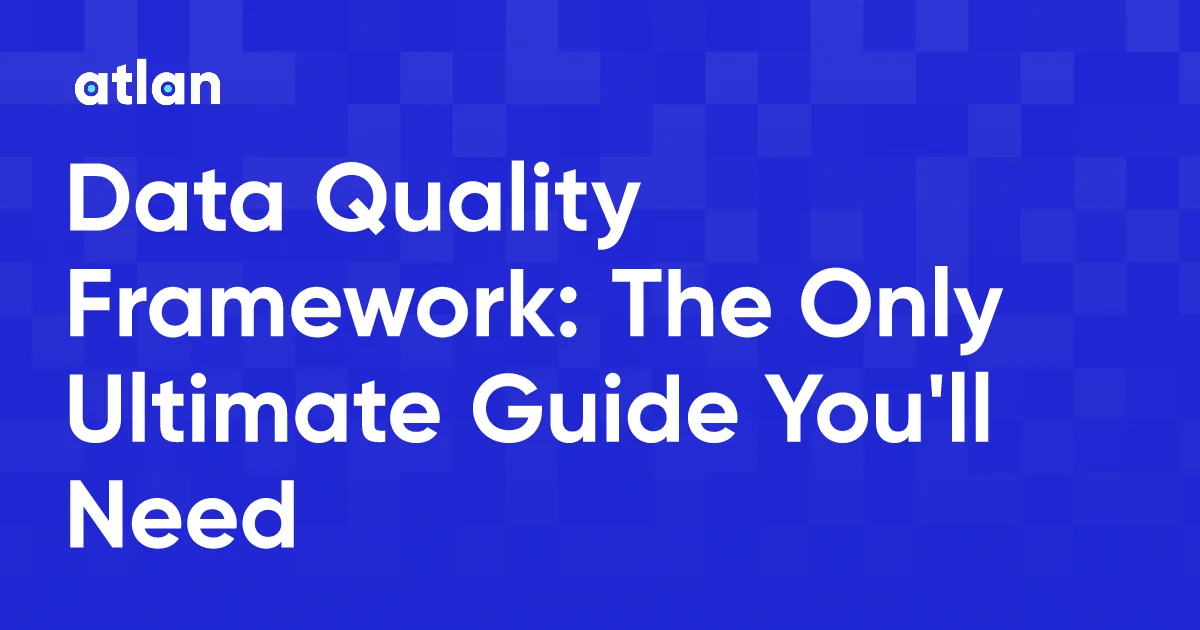6 Data Governance Examples for Modern Teams: Data Enablement, Security, Quality, & More
What are the six most significant data governance examples?
Permalink to “What are the six most significant data governance examples?”Summarize and analyze this article with 👉 🔮 Google AI Mode or 💬 ChatGPT or 🔍 Perplexity or 🤖 Claude or 🐦 Grok (X) .
Let’s take a closer look at six data governance examples, each showcasing how data governance can drive success and contribute toward your business outcomes.
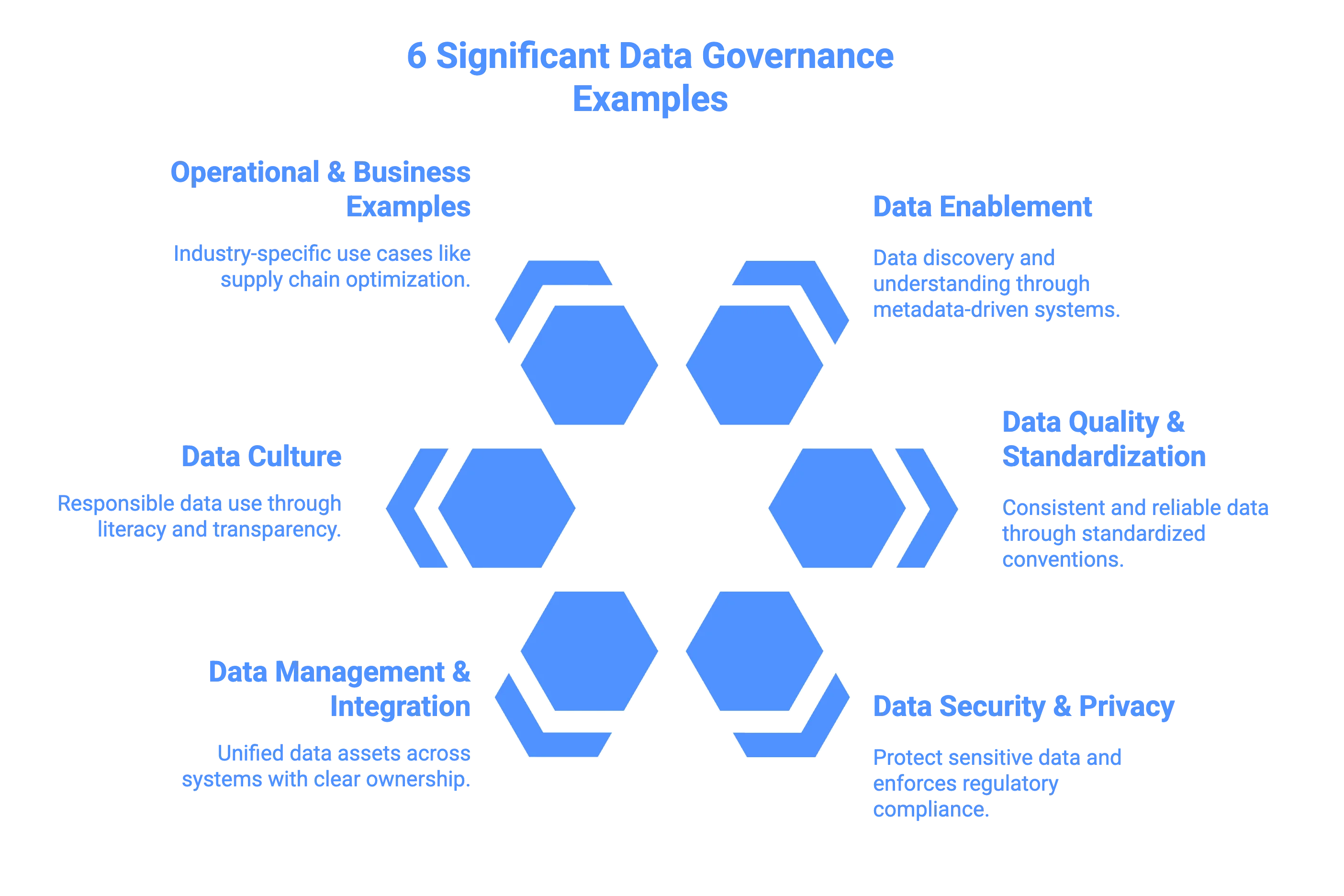
Some of the most significant data governance examples - Image by Atlan.
1. Data enablement
Permalink to “1. Data enablement”Why it matters
Data enablement bridges the gap between raw datasets and business outcomes by improving discoverability, literacy, and usability of data across the organization.
It supports the ability to read, understand, create, and communicate data, while making everyone in your organization use data responsibly.
Examples
-
Data catalogs to manage data, metadata, AI: As a growing startup, Chargebee’s top challenge was not having proper documentation for all warehouse tables.
Using a data catalog like Atlan, they created brief descriptions of each table and a single-line description for all columns within these tables, tagged data owners, and added their metric definitions.
-
Embedded data context: Datacamp set up embedded context within their daily workflows using Atlan’s Chrome Plug-in and Slack integration–everyone asking “Where can I find this data? What is the definition of this metric?” can find those answers instantly.
-
Data community building: Sands Capital uses Atlan and Snowflake to build a “Data Literacy Club” and “Data Therapy Sessions” to improve access, quality, and stakeholder trust.
-
Data literacy programs: Airbnb’s in-house initiative called “Data University” equips employees with skills to read, analyze, and act on data confidently.
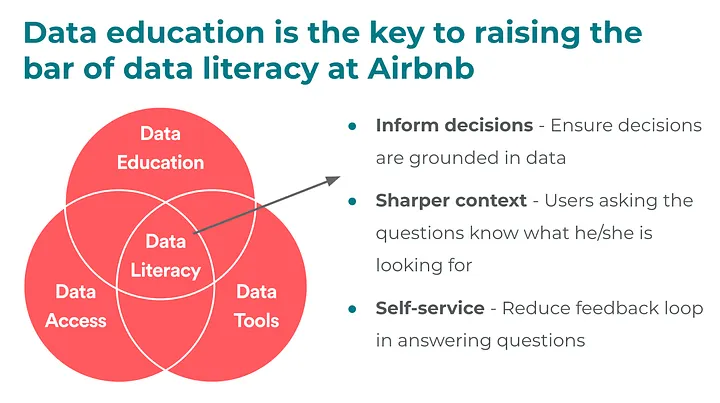
Data literacy at Airbnb, leading to data enablement - Source: Medium.
2. Data quality and standardization
Permalink to “2. Data quality and standardization”Why it matters
Data quality & standardization make sure data is clean, consistent, and reliable, which is essential for accurate analytics, reporting, and accuracy in AI-assisted outcomes. Without it, bad data causes bad decisions.
Examples
- Standardized naming conventions: Harmonizing field and metric names (e.g. “customer_sign_up” vs “signed_up”) so business reports align. CSE Insurance set up a single source of truth to standardize their basic definitions and metrics.
- Validation & cleansing pipelines: Automating checks to remove duplicates, fix incomplete addresses, and correct inconsistent formatting.
- Schema enforcement: Defining strict data schemas in ETL or ingestion pipelines so downstream systems get predictable, high‑quality data.
- Customer 360o view: Unifying customer data from multiple systems for a single, reliable profile, enabling personalized experiences and better customer understanding.
3. Data security and privacy
Permalink to “3. Data security and privacy”Why it matters
Data governance must protect sensitive data and ensure organizations comply with privacy laws. Poor controls risk leaks, penalties, and damage to trust.
Examples
- Access controls: Restricting sensitive datasets—such as SSNs or health information—to specific roles like HR or Compliance.
- Regulatory compliance policies: Establishing workflows that meet GDPR, CCPA, HIPAA, or other regional privacy requirements for consent, retention, and protection. - Tide used Atlan to automatically identify and secure personal data for GDPR compliance, finishing 50 days of work within 5 hours.
- Masking or encryption, with auto-propagation via lineage: Applying data masking, encryption at rest and in transit, especially for PII or financial data. - Contentsquare auto-propagated tags, classification, and security policies to underlying data assets using Atlan.
- Data leak prevention: Implementing measures to prevent data breaches that leak sensitive data and misuse it for illegal purposes.
4. Data management and integration
Permalink to “4. Data management and integration”Why it matters
Data management and integration ensure different data sources work together seamlessly and data assets are trusted, governed, and usable. This lowers risk from fragmented systems and siloes.
Examples
- Data stewardship: Assigning dataset owners who manage lineage, quality, and access for their domains.
- Data integration after mergers/acquisitions: Consolidating data from multiple platforms into shared storage with unified definitions.
- Endless extensibility and interoperability: Ensuring governance tools integrate across your modern data stack to connect with warehouses, orchestration tools, and BI platforms. - REA Group used Atlan’s open architecture and APIs to set up an interoperable, future-ready data stack.
- Shared metadata standards: Defining and automating common tags, classifications, and ownership to reduce friction when integrating systems and scaling governance efforts. - Porto automated the governance of over 1 million data assets using active metadata management, saving their team 40% of their time.
5. Data culture
Permalink to “5. Data culture”Why it matters
Culture drives behavior. A strong data culture ensures data governance isn’t just policies but part of everyone’s day-to-day work. It increases adoption, responsibility, and long‑term success.
Examples
- Training and literacy programs: Sands Capital’s Data Literacy Club helps teams across functions get fluent in interpreting, using, and governing data.
- Governance by design: Embedding governance requirements, such as clear naming, tags, access roles, into data workflows from the start.
- Leadership alignment: Including data governance metrics in performance reviews and leadership KPIs so data responsibility is rewarded.
- Partner, not vendor approach: Treating data governance platform providers as strategic partners—involving them in defining standards and workflows rather than having them simply deliver fixes. - Elastic found Atlan to be the right partner as they grew their data governance practice, because Atlan’s approach was ‘What are you trying to accomplish as a company?’, and not ‘Here’s a data catalog.’
6. Operational and business-specific examples
Permalink to “6. Operational and business-specific examples”Why it matters
Real business contexts show how data governance adds value in operations, regulation, or industry‑specific challenges. Use cases help build confidence and illustrate return on investment.
Examples
- Supply chain standardization: Retailers standardizing supplier and product data reduce stockouts and improve inventory forecasting.
- Healthcare ETL pipelines: Hospitals integrating patient, lab, and billing data so clinical and operational decisions use more accurate, unified data.
- Supplier management & ESG reporting: Enforcing consistent supplier information across procurement systems to support sustainability and reporting.
What are the key takeaways from the data governance examples?
Permalink to “What are the key takeaways from the data governance examples?”Having explored real-world data governance examples, let’s highlight some of the vital lessons from these stories:
- Establish a clear data governance structure with well-defined roles and responsibilities.
- Set up a single source of truth to eliminate data silos and make your data governance efforts more streamlined.
- Treat data as a product and assign owners responsible for ensuring its adherence to your rules, policies, and standards.
- Adopt a flexible, rather than a ‘one-size-fits-all’, approach to data governance.
- Invest in enhancing data literacy so that your employees can understand, interpret, and use data effectively and responsibly, just like Airbnb did with its in-house educational initiative.
- Use automation + metadata for scale and control, as leveraging metadata for search, lineage, and profile generation can cut discovery time drastically and improve trust in data.
How are organizations scaling governance across their data and AI stacks using Atlan?
Permalink to “How are organizations scaling governance across their data and AI stacks using Atlan?”Organizations today are integrating data governance across all systems — data warehouses, BI tools, AI/ML pipelines — using Atlan as their metadata control plane.
The goal is to automate, unify, and enforce governance at scale rather than retrofitting controls piecemeal.
What this looks like in practice
Permalink to “What this looks like in practice”- Active metadata control: Atlan captures metadata from all tools and systems (ETL pipelines, BI dashboards, AI training datasets) to give a single view of data lineage, ownership, and policy status.
- Automated policy enforcement: Rules for data access, quality checks, compliance, and privacy are codified and enforced via Atlan — reducing manual reviews and increasing speed of governance.
- Risk assessment workflows for AI: YDC built AI governance workflows using Atlan. They reused existing asset models, added custom attributes, and workflows to assess AI risks (bias, privacy, explainability).
- Extensibility and integration: Atlan integrates with cloud warehouses, BI tools, orchestration systems. Organizations like GM have shown how Atlan can layer governance into existing stacks with minimal disruption.
- Scaling teams and culture along with tools: As governance tools scale, firms invest in data literacy, clear roles, ownership, and self‑service where non-technical users can rely on governed data with confidence. Cases like Sands Capital, CSE Insurance, Datacamp, and ContentSquare illustrate this.
Real stories from real customers: Data governance that’s automated, scalable, and future-proof
Permalink to “Real stories from real customers: Data governance that’s automated, scalable, and future-proof”
Modernized data stack and launched new products faster while safeguarding sensitive data
“Austin Capital Bank has embraced Atlan as their Active Metadata Management solution to modernize their data stack and enhance data governance. Ian Bass, Head of Data & Analytics, highlighted, ‘We needed a tool for data governance… an interface built on top of Snowflake to easily see who has access to what.’ With Atlan, they launched new products with unprecedented speed while ensuring sensitive data is protected through advanced masking policies.”

Ian Bass, Head of Data & Analytics
Austin Capital Bank
🎧 Listen to podcast: Austin Capital Bank From Data Chaos to Data Confidence
Let’s help you build a robust data governance framework
Book a Personalized Demo →
53 % less engineering workload and 20 % higher data-user satisfaction
“Kiwi.com has transformed its data governance by consolidating thousands of data assets into 58 discoverable data products using Atlan. ‘Atlan reduced our central engineering workload by 53 % and improved data user satisfaction by 20 %,’ Kiwi.com shared. Atlan’s intuitive interface streamlines access to essential information like ownership, contracts, and data quality issues, driving efficient governance across teams.”
Data Team
Kiwi.com
🎧 Listen to podcast: How Kiwi.com Unified Its Stack with Atlan
Let’s help you build a robust data governance framework
Book a Personalized Demo →Ready to future-proof your data governance efforts?
Permalink to “Ready to future-proof your data governance efforts?”These real-world data governance examples highlight what’s possible when teams move beyond theory into execution.
Such insights help you overcome common obstacles and develop a data governance program that drives business growth, besides helping you navigate the regulatory landscape.
It’s crucial to remember that effective data governance goes beyond compliance and risk management — it serves as a strategic catalyst for cultivating trust and generating value from data.
The key is having a governance framework that’s flexible, collaborative, and activated by metadata. A platform like Atlan can help you scale these efforts across teams and technologies—turning scattered efforts into a unified, high-impact data strategy.
Let’s help you build a robust data governance framework
Book a Personalized Demo →FAQs about data governance examples
Permalink to “FAQs about data governance examples”1. What are data governance examples?
Permalink to “1. What are data governance examples?”Examples include assigning data owners, standardizing naming conventions, using access controls, integrating metadata catalogs, and complying with regulations like GDPR or HIPAA.
2. What is a real-life example of data governance?
Permalink to “2. What is a real-life example of data governance?”Sands Capital used Atlan to launch “Data Literacy Clubs” and “Data Therapy Sessions,” improving access, quality, and trust in their data across the organization.
3. How do real‑world data governance programs deliver ROI?
Permalink to “3. How do real‑world data governance programs deliver ROI?”Governance examples show measurable outcomes such as reduced time in data discovery, fewer data errors in reports, faster compliance readiness, and better decision‑making thanks to trusted, clean data.
4. How long does it take to see benefits from data governance?
Permalink to “4. How long does it take to see benefits from data governance?”Early wins like standardized naming conventions, data cataloging, or assigning data owners often deliver results in 3‑6 months. More complex integrations or culture shifts typically require a 12‑ to 18‑month commitment.
5. What are the risks if governance examples are copied without adaptation?
Permalink to “5. What are the risks if governance examples are copied without adaptation?”Copy‑pasting governance implementation examples from other firms can lead to misalignment with your technology stack, business processes, compliance needs, or culture.
Adaptation ensures relevance, avoids excess overhead, and supports sustainable adoption.
Share this article
Atlan is the next-generation platform for data and AI governance. It is a control plane that stitches together a business's disparate data infrastructure, cataloging and enriching data with business context and security.
Data governance examples: Related reads
Permalink to “Data governance examples: Related reads”- AI for Compliance Monitoring in Finance: Use Cases & Setup
- Unified Control Plane for Data: The Future of Data Cataloging
- Data Governance for AI: Challenges & Best Practices
- AI Governance: How to Mitigate Risks & Maximize Benefits
- The Future of AI Governance: Gartner’s Roadmap for Responsible AI Adoption
- 6 Essential AI Governance Principles for Responsible and Ethical AI Use
- What Is Data Lineage & Why Is It Important?
- Automated Data Lineage: Making Lineage Work For Everyone
- How AI-Ready Data Lineage Activates Trust & Context in 2025
- Data Catalog: Does Your Business Really Need One?
- What Is data governance & why does it matter?
- What is a data governance framework and why do you need one?
- What is data stewardship: Meaning, benefits, and its importance in data governance
- Data Governance Tools Comparison: How to Select the Best
- Data Governance Process: Why Your Business Can’t Succeed Without It
- Data Governance Maturity Model: A Roadmap to Optimizing Your Data Initiatives and Driving Business Value
- Federated Data Governance: Principles, Benefits, Setup
- Data Governance Committee 101: When Do You Need One?
- Data Governance Roles & Responsibilities: A Quick Round-Up
- Data Governance Councils in 2025: Everything You Need to Know
- Data Governance Policy: Examples, Templates & How to Write One
- 7 Best Practices for Data Governance to Follow in 2025
- 7 Must-Have Data Governance Certifications for 2025
- How to Drive Business Value with Data Governance

